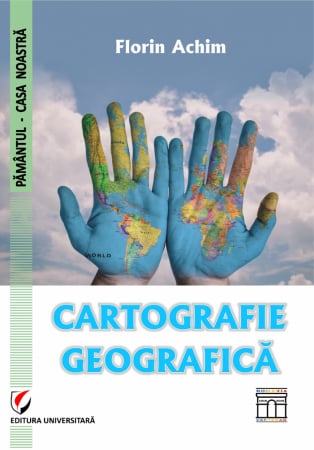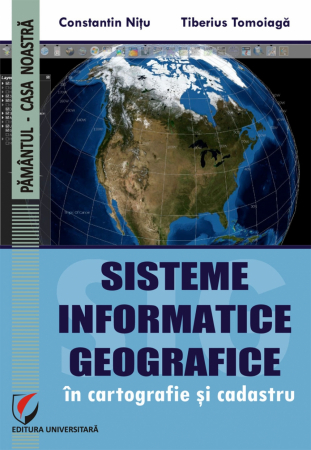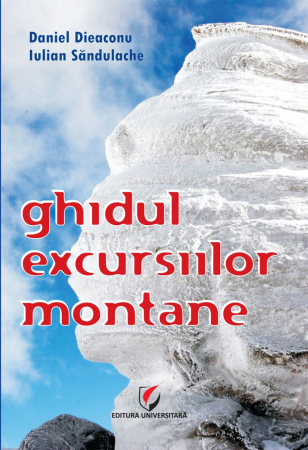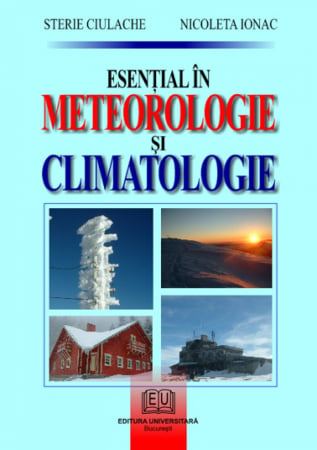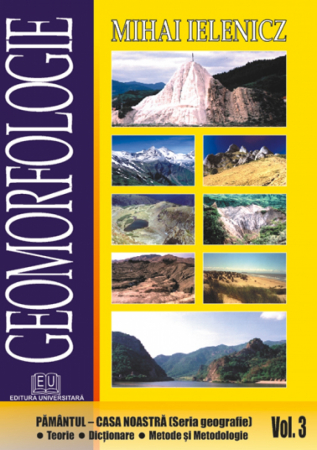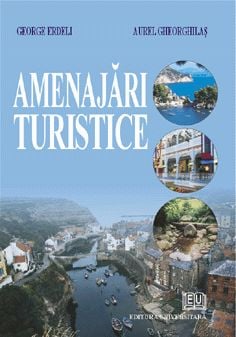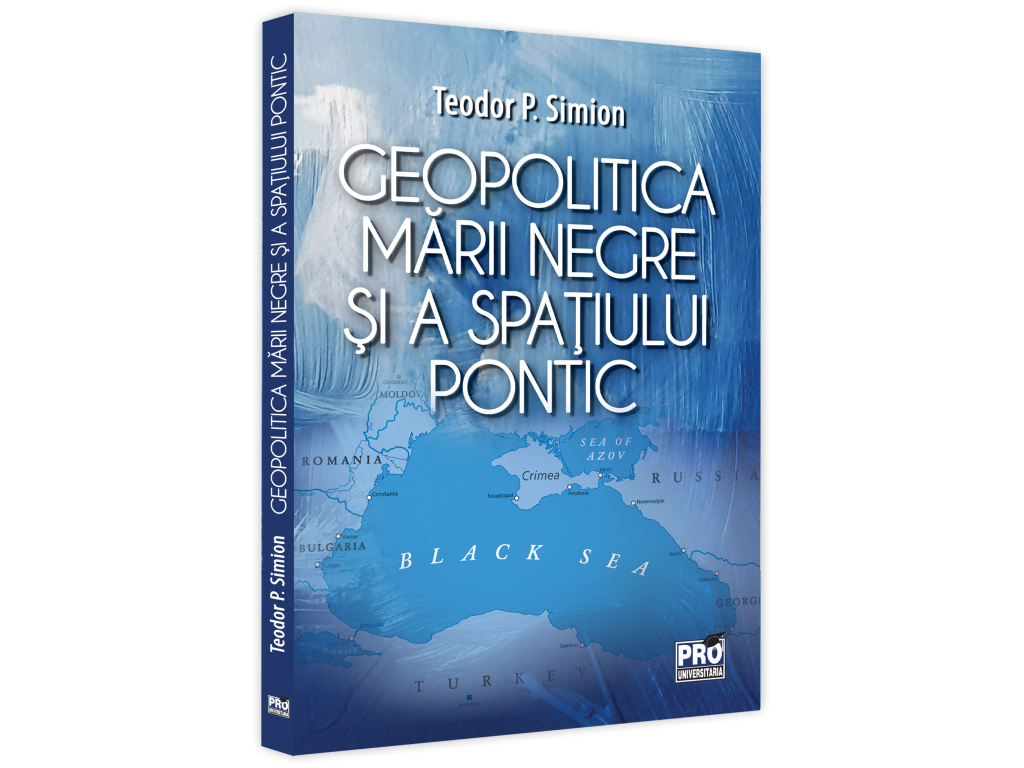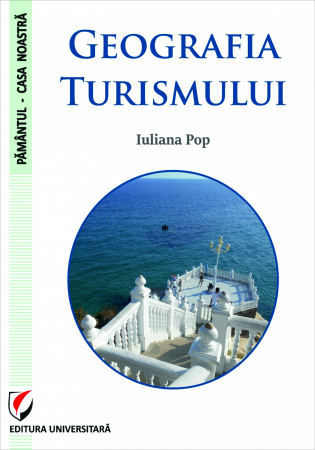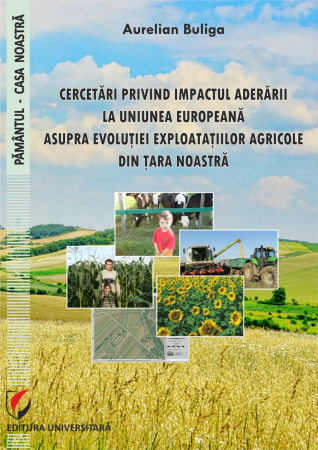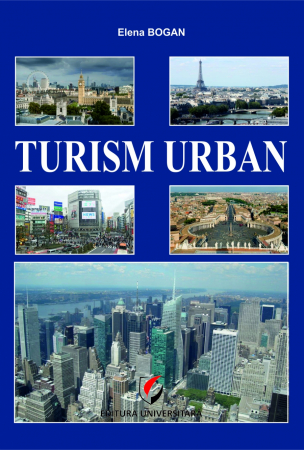ISBN: 978-606-591-480-3
DOI: 10.5682/9786065914803
Publisher year: 2012
Edition: I
Pages: 242
Publisher: Editura Universitara
Author:
- Description
- Download (1)
- Content
- Authors
- Reviews (0)
The Subcarpathian depressions of Oltenia hold a special place within the complex framework of the Romanian geographical space, permanently inhabited since times immemorial. This corridor-like area has a rich offer for research-workers, which explains the objective urge for this study and the subjective motivation aroused by a comment of George Vâlsan, the great Romanian geographer, to the effect that the country’s geography should begin with the geography of one’s birth-place, the repository of a lot of fresh elements imbued with images and feelings hidden in the heart of every child, and should only be brought up to light, put to account and explained (Opere alese, 1971, pp. 30).
The work (The Subcarpathian depressions of Oltenia between the Jiu and the Bistriţa Vâlcii rivers. Human Geography) was not simply an opportunity for me to improve my professional skills, but also a chance to get an insight into the human problems of an area so very dear to me because it is the place where my family and myself originate from.
The purpose of this study was to get a detailed knowledge of the human reality, of the socio-economic changes experienced by the population and settlements of the Subcarpathian depressions of Oltenia. The analysis focused on three aspects: evolution, structure-functionality and typology. This approach is based on a big volume of information found in specialist works of geography, history, sociology, territorial planning, statistics and modern data quantification methods. Therefore, it is clearly an inter-disciplinary study.
Field investigations have been associated with bibliographical, cartographic, statistical data, diagrams and figures highlighting the type of organisation of the area under discussion, as well as its spatial and social entities: natural components, population, settlements, social and economic relations, etc.
The Oltenia Subcarpathian depressions have in time developed mostly a rural habitat. Our analysis had in view three levels: 1) the nature-man relationship in the Subcarpathian Corridor between the Jiu and the Bistriţa Vâlcii rivers, part of the Getic Subcarpathians; 2) the commune and the town, the administrative units involved in numerous demographic and socio-economic aspects, and 3) the village and its groups of population.
The main goal was to emphasise the characteristic features of the population, settlements, and economy, the geographical landscape and development prospects.
The work contains ten chapters. Chapter One overviews profile studies in the specialist literature dealing with the regional geography concept, the Subcarpathian space in general and the Oltenia area, in particular.
Chapter Two present the area’s geographical position within the Romanian territory and the Getic Subcarpathians; boundaries and sub-units are considered in relation to the routes of communications and the administrative bounds. Holding a transitional place between mountains and the piedmont hills, the area has easy access to the complementary resources of these two geographical regions.
The characteristic features of the natural factors (landform, geology, climate, water, vegetation, soil and subsoil resources) in the Subcarpathian depressions of Oltenia are analysed in detail and correlated with the human element (Chapter Three).
Similar to a demographic approach, which implies taking a complex look at the problematique of human geography, the present study brings up into discussion (Chapter Four) the geographical space, highlighting on the history of people’s settlement in the region, the formation and evolution of the settlement net intimately connected with the natural conditions. Distinct sub-chapters deal with the origin of human settlements, archaeological documents, documentary evidence and toponyms, offering solid scientific arguments on the evolution of the region’s population and socio-economic life. As known, geographical elements do have a certain influence on place-names, more precisely on the denomination of settlements.
The most extensive chapters (Five and Six) are meant to diagnose the human potential (numerical evolution, and movements of population, human pressure on the territory, demographic structures and behaviours, migration) and analyse the main features of the network of settlements, their distribution with altitude; the demographic, morphostructural and functional typology of rural settlements; the spread of urban settlements in the territory and their demographic size, functional zoning, urban development level and the evolution of rural-urban relations.
The demographic indicators used emphasise the structural transformations in the settlements’ social-economic and political life, as well as the specific types of demographic evolutions. Statistical data have been supplemented and correlated with field observations on local customs and traditions. Recent evolutions in the network of settlements are increasingly influenced by the economic and social-political factors. Local interests focus on the modality in which natural and human resources can be put to best account. This interest is expected to influence the organisation of the territory and, at the same time, augment the region’s habitat potential.
Current economic activities, their particularities and role in organising the territory are discussed at large in Chapter Seven, with highlight on agriculture and animal husbandry, an old traditional occupation in the Subcarpathian area of Oltenia. The conclusions reached suggest good prospects for the development of this branch, moreover so, as the mutations occurred in the farming structures during the transition period confirm it. As important is the forestry sector, having in view the considerable wood resources of the area. Other economic activities significantly involved in the overall development of the region are tackled in sub-chapters, e.g. industry and the factors that favoured the emergence of this branch; traditional household occupations; a general outline of the natural and anthropic tourism potential. Tourism may indeed become a development alternative, but attaining this goal requires investments in updating the local transport and accommodation infrastructure.
The complexity of individual and collective life are broached in Chapter Eight. Among the problems facing the local communities we would recall the socio-cultural infrastructure and activities (tradition and continuity of education from the first forms of learning organised on the estates of monasteries and of landowners (“boyars”) up to the present-day system), health-care and social assistance. Aspects of cultural geography (cultural and religious infrastructure, customs, traditions, ethnography and folklore, traditional crafts and elements of folk architecture) are detailed out in this chapter.
Proceeding from the analyses made in previous chapters, Chapter Nine offers a careful selection of the physical-geographical and demographic elements (housing and economic issues, technical endowment of settlements, social and ecological situation) correlated with an adequate SWOT analysis scheme. This approach points out development strategies, territorial planning and the hierarchisation of local settlements.
Chapter Ten expounds on the opportunities and chances for life in the depressions of Oltenia to attain normality. Aspects relating to the implementation of various types of projects liable to relaunching the economy, as well as the possible impact of sustainable development on this Subcarpathian space are also enlarged upon.
Since the present work has a geographical character, one will find in it maps on various scales illustrating the phenomena discussed and helping the reader to “visualise” general elements and details alike. Statistical information (processed in the form of indicators suitable to a complex analysis of human geography) and other types of information found in the bibliographical references consulted and in field investigations have been synthesised and processed (cartographic schemata, tables and graphs) to best illustrate the contents of this study; suggestive photographic images are also included.
Acknowledgments
I would like to express my sincerest gratitude to Professor George Erdeli, a remarkable teacher and researcher of the Romanian urban and rural habitat. His scientific supervision helped me outline and structure my Ph.D. thesis, he assisting me throughout in matters of methodology, analytical approach and interpretation of results.
Thanks are due also to all those who have lent their support in various stages of my documentation work: my research-colleagues from the Romanian Academy’s Institute of Geography, particularly the members of the Human Geography Laboratory among whom I have been completing my knowledge in the study of Geography; the professorial staff of the Faculty of Geography – University of Bucharest, and last but not least, my whole-hearted consideration for the specialists of the Statistics Directions of Vâlcea and Gorj counties and the Local Councils of the towns and communes I have surveyed.
Translated by Hermine-Amelie Marsohn
-
Depresiunile subcarpatice oltene dintre Jiu şi Bistriţa Vâlcii. Geografie umană
Download
INTRODUCERE / 13
INTRODUCTION / 16
Cap. 1. Depresiunile subcarpatice oltene în literatura de specialitate. Stadiul cunoaşterii problemelor de geografie umană / 19
CAP. 2. Poziţia Geografică a depresiunilor subcarpatice oltene dintre Jiu şi Bistriţa Vâlcii / 24
2.1.Poziţia geografică în cadrul Subcarpaţilor Getici. Limitele fizico-geografice / 24
2.2. Poziţia geografică în funcţie de principalele căi de comunicaţie / 28
2.3. Delimitarea administrativă a arealului de studiu / 30
CAP. 3. Favorabilitatea / restrictivitatea factorilor de mediu natural în extinderea habitatului uman / 32
3.1. Particularităţi geologice şi geomorfologice / 32
3.2. Tipuri poziţional-geografice de habitat uman / 35
3.3. Particularităţi climatice / 35
3.4. Influenţa resurselor de apă în dezvoltarea reţelei de aşezări / 39
3.5. Potenţialul biopedogeografic / 41
3.6. Resursele subsolului şi raporturile acestora cu funcţia economică / 43
3.7. Rezervaţii naturale / 45
Cap. 4. Depresiunile subcarpatice oltene - spaţiu geografic de veche şi permanentă locuire. Dovezi arheologice, documentare şi toponimice / 47
4.1. Istoricul populării zonei, al formării şi evoluţiei reţelei de aşezări / 47
4.2. Originea aşezărilor omeneşti. Documente arheologice, istorice / 48
4.3. Toponimele – argumente ale procesului de populare şi dezvoltare socio-economică a regiunii / 56
Cap. 5. Analiza şi diagnoza potenţialului uman / 60
5.1. Evoluţia numerică a populaţiei / 60
5.2. Dinamica demografică / 63
5.2.1. Mişcarea naturală / 63
5.2.1.1. Natalitatea / 63
5.2.1.2. Mortalitatea / 65
5.2.1.3. Mortalitatea infantilă / 66
5.2.1.4. Indicele de vitalitate (indicele lui Pearl) /68
5.2.1.5. Bilanţul natural / 69
5.2.1.6. Nupţialitatea / 71
5.2.1.7. Divorţialitatea / 71
5.2.1.8. Stabilitatea cuplurilor / 72
5.2.2. Mişcarea migratorie / 72
5.2.2.1 Sosirile / 73
5.2.2.2. Plecările / 75
5.2.2.3. Bilanţul migratoriu / 76
5.2.2.4. Migraţia internaţională pentru muncă / 77
5.2.3. Bilanţul total / 78
5.3. Presiunea umană asupra teritoriului. Densităţi / 79
5.3.1. Densitatea medie a populaţiei / 80
5.3.2. Densitatea netă a populaţiei / 80
5.3.3. Densitatea fiziologică a populaţiei / 81
5.4. Structuri şi comportamente demografice / 82
5.4.1. Structura populaţiei pe medii sociale / 82
5.4.2. Structura etnică / 82
5.4.3. Structura confesională / 84
5.4.4. Structura populaţiei pe grupe de vârstă şi sexe / 84
5.4.4.1. Indicele de feminitate / 88
5.4.4.2. Potenţialul demografic / 90
5.4.4.3. Indicele de îmbătrânire a populaţiei / 91
5.4.4.4. Indicele de reînnoire a forţei de muncă / 93
5.4.5. Gradul ocupaţional al forţei de muncă / 95
5.4.6. Structura populaţiei ocupate pe activităţi economice/ 96
5.4.7. Şomajul / 98
5.4.8. Structura socio-profesională a populaţiei ocupate / 99
Cap. 6. Principalele caracteristici ale reţelei de aşezări / 100
6.1. Repartiţia şi distribuţia altitudinală a aşezărilor / 101
6.2. Tipologia aşezărilor rurale / 104
6.2.1. Principalele categorii demografice de aşezări rurale / 105
6.2.2. Ierarhizarea aşezărilor după numărul de locuitori şi indicele de asimetrie ierarhică / 107
6.2.3. Aşezările rurale – dinamica populaţiei / 108
6.2.4. Clasificarea comunelor după mărimea demografică / 111
6.2.5. Clasificarea după mărimea medie / 111
6.2.6. Tipologia morfostructurală / 111
6.2.7. Tipologia funcţională / 118
6.2.8. Indicele de dispersie Demangeon / 121
6.2.9. Tipuri de peisaje rurale/ 121
6.2.9.1. Peisaje rurale în funcţie de configuraţia teritorială a vetrei Satelor / 122
6.2.9.2. Peisaje rurale în funcţie de structura categoriilor de utilizare a terenurilor / 123
6.2.9.3. Peisaje rurale în funcţie de dinamica demografică/ 125
6.2.9.4. Peisaje rurale în funcţie de impactul factorului uman asupra mediului / 126
6.3. Aşezările urbane / 128
6.3.1. Repartiţia teritorială / 128
6.3.2. Mărimea demografică şi funcţia urbană / 131
6.3.3. Zonarea funcţională / 133
6.3.4. Nivelul de dezvoltare urbană / 137
6.3.5. Evoluţia raportului rural-urban / 139
Cap. 7. Caracteristicile actuale ale activităţilor economice şi rolul lor în organizarea teritoriului /142
7.1. Activităţile agricole/ 142
7.1.1. Premise ale dezvoltării agriculturii/142
7.1.2. Mutaţii în structurile agricole în perioada de tranziţie/143
7.1.3. Structura culturilor şi producţiei agricole/146
7.1.4. Creşterea animalelor/149
7.2. Silvicultura/155
7.3. Activităţile industriale/158
7.3.1. Factori favorabili de apariţie/158
7.3.2. Ocupaţii casnice tradiţionale/159
7.3.3. Activităţile industriale şi diversificarea economică/169
7.4. Impactul transporturilor asupra aşezărilor umane/172
7.5. Turismul – o alternativă de dezvoltare a aşezărilor/175
7.5.1. Potenţialul turistic. Caracterizare generală/176
7.5.1.1. Potenţialul turistic natural/176
7.5.1.2. Potenţialul etnografic, cultural, arhitectura populară/182
7.5.2. Infrastructura turistică/193
7.5.3. Activitatea turistică/ 194
CAP. 8. Analiza geografică a infrastructurii socio-culturale şi a activităţilor corespunzătoare / 197
8.1. Învaţământul/197
8.1.1. Tradiţia şi continuitatea învăţământului/197
8.1.2. Organizarea sistemului de învăţământ în perioada actuală/198
8.1.2.1. Numărul de unităţi şcolare/98
8.1.2.2. Personalul didactic şi elevii cuprinşi în sistemul de învăţământ/199
8.2. Sănătatea şi asistenţa socială/200
8.3. Aspecte de geografie culturală/201
8.3.1. Infrastructura culturală şi religioasă/201
8.3.2. Obiceiuri şi tradiţii/203
8.3.3. Etnografie şi folclor/204
8.3.4. Meşteşuguri tradiţionale/205
8.4. Elemente de arhitectură populară/206
CAP. 9. Elemente de analiza Swot - Baza de fundamnetare ştiinţifică a strategiilor de dezvoltare / 211
9.1. Elemente de analiză SWOT / 211
9.2. Regionarea spaţiului după gradul de dezvoltare socio-economică / 212
CAP. 10. Oportunităţi şi posibilităţi de normalizare a vieţii în regiunea subcarpatică olteană analizată / 215
10.1. Strategii de dezvoltare durabilă / 215
10.2. Pluriactivitatea – o strategie a optimizării veniturilor gospodăriilor rurale / 217
10.3. Tipuri de proiecte implementate pentru relansarea economică a localităţilor şi modernizarea acestora / 219
CONCLUZII / 222
CONCLUSIONS / 225
BIBLIOGRAFIE / 228
Is senior researcher at the Institute of Geography of the Romanian Academy - Laboratory of Human Geography, its areas of interest are population geography and rural geography.
She has published over 30 scientific articles in professional journals in the country, chapters in collective works and specialized maps.
It has also supported over 50 scientific papers in the country and abroad, was involved in developing research themes of the Romanian Academy and several research contracts.
In 2009 doctoral dissertation titled Carpathian Oltenia depressions of Bistrita River and Valcea. Study of Human Geography, under the scientific coordination of prof. Dr. George Erdeli the Department of Geography, University of Bucharest.
Customer Support Monday - Friday, between 8.00 - 16.00
0745 200 718 0745 200 357 comenzi@editurauniversitara.ro
6359.png)
![Carpathian Oltenia depressions of Bistrita River and Valcea. Human Geography [1] Carpathian Oltenia depressions of Bistrita River and Valcea. Human Geography [1]](https://gomagcdn.ro/domains/editurauniversitara.ro/files/product/large/depresiunile-subcarpatice-oltene-dintre-jiu-i-bistria-vlcii-geografie-uman-1649-259070.jpg)


